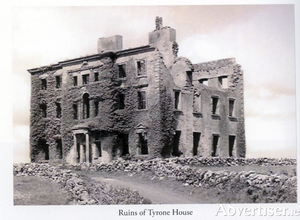Search Results for 'the Galway Vindicator'
26 results found.
The Galway Races
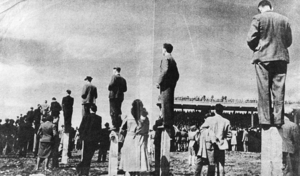
Records of organised race meetings in County Galway go back to the mid-13th century when what were known as ‘horse matches’ were run under the King’s Plate Articles. In 1764, there was a five-day race meeting at Knockbarron near Loughrea. The first race day at Ballybrit was on August 17th, 1869 when contemporary records show that some 40,000 people turned up to watch the sport. The racecourse, measuring one and a half miles, was laid out by a civil engineer, a Mr. T. Waters and was described as “Covered with herbage or moss and excelling any course in Ireland for good going”.
Grattan Road buildings

The Galway Vindicator of November 24, 1863 reported that “The completion of the Grattan Road will add much to the beauty and salubrity of the handsomest of our suburban districts. The embankment being made by Miss Grattan will reclaim 28 acres of land, which is now a swamp, but which will become, with a little cultivation, some of the most fertile ground in the neighbourhood. Miss Grattan has given great employment to the poor of the neighbourhood in making this road and embankment. Since June last, up to the present time, there has been over 200 labourers employed and from 12 to 14 masons regularly. It will, when finished, alter the appearance of Salthill and contribute much to make that favourite watering place one of the nicest localities in the kingdom”.
A forgotten Claddagh rescue
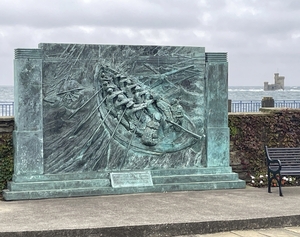
During a recent visit to the Isle of Man, I was struck by a substantial monument in Douglas, commemorating a maritime rescue in 1830. Aware of another heroic rescue in Galway the same year, I realised both took place during the same storm.
Galway postboxes

The regular use of the words “post” and “Litir” in 15th century Irish manuscripts suggests that by that time, a postal system was already in existence here. In 1657, a Bill was passed ‘for settling the postage of England, Scotland and Ireland’ which set up a Government monopoly of the service. The Galway Post Office had been established in 1653, and the network of Post Offices throughout the county gradually grew.
The Royal Galway Yacht Club
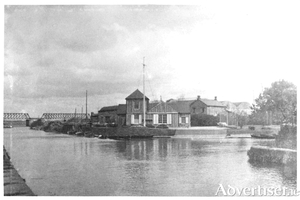
Our first illustration today is a drawing by MJ Tighe, architect, Galway, of the proposed new clubhouse for the Royal Galway Yacht Club at the corner of the Gaol River and the Eglinton Canal. The club was founded and received Royal Warrant in 1882. It was established as a social combination to promote sailing and rowing on the bay and lake, and the enjoyment of all the amenities of the Corrib Lake and River. They managed to survive and carry on for some years in difficult circumstances.
One hundred years ago this week…
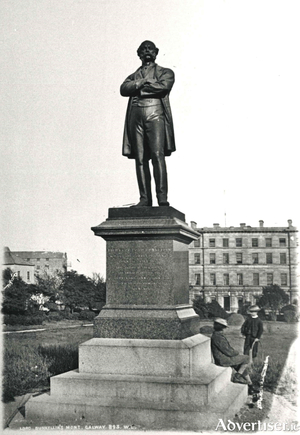
John Henry Foley was one of the greatest artists this country produced in the 19th century. He was a world famous sculptor who was commissioned to produce many public works in different parts of the world including Galway. The statue he produced here was of Lord Dunkellin, a 2.5 metre high bronze on a polished Peterhead red granite base which stood on two steps of Aberdeen granite about 20 yards inside the main gate into the Square. ‘In none of the great works which have given him world-wide celebrity has he shown more genius and skill than in the present instance where, with only the slender assistance of a photograph, has he been able to produce the faithful likeness.’
March 1875 - Smallpox in Athenry
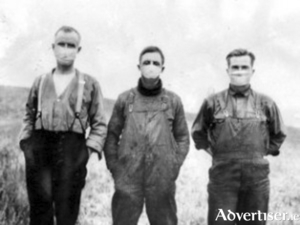
On March 2 1875, the medical officer of the Athenry Dispensary District, Dr WJ Leonard, wrote an urgent letter to the Local Government Board (LGB) in Dublin, regretting to report a ‘very bad case of smallpox’ which had come into his district the previous day. He briefly described how it was discovered:
An astonishing rescue
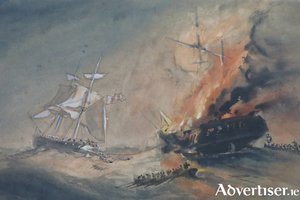
There can be no greater horror for passengers and crew than facing death on a burning ship in a heavy sea, that was sinking by its bow. Which death would you choose? Stay on board and be burnt? Or chance your luck in the waves?
Galway’s ‘Titanic’ burst into flames in the Atlantic

On Saturday October 6 1860 approximately one hundred miles out from Boston, the PS Connaught, one of the biggest and most spectacular transatlantic ships of its day, hit a storm, and sprung a leak. As water poured into the engine room, an auxiliary coal-fired engine was started which sparked a fire which rapidly spread out of control. Flames and smoke forced the 591 passengers and crew on to the top deck.
